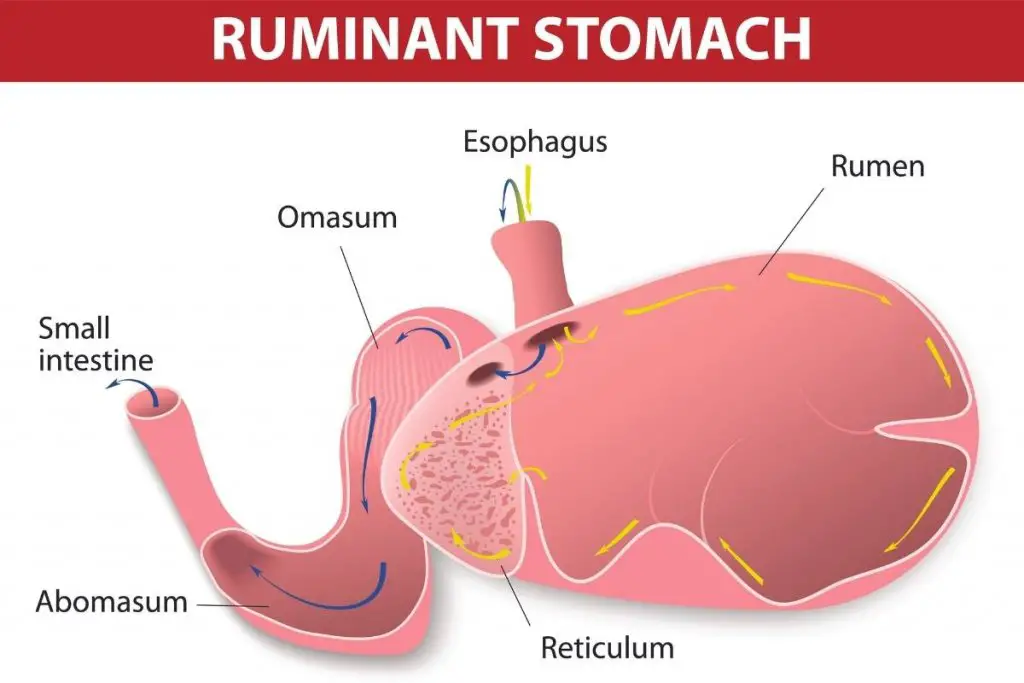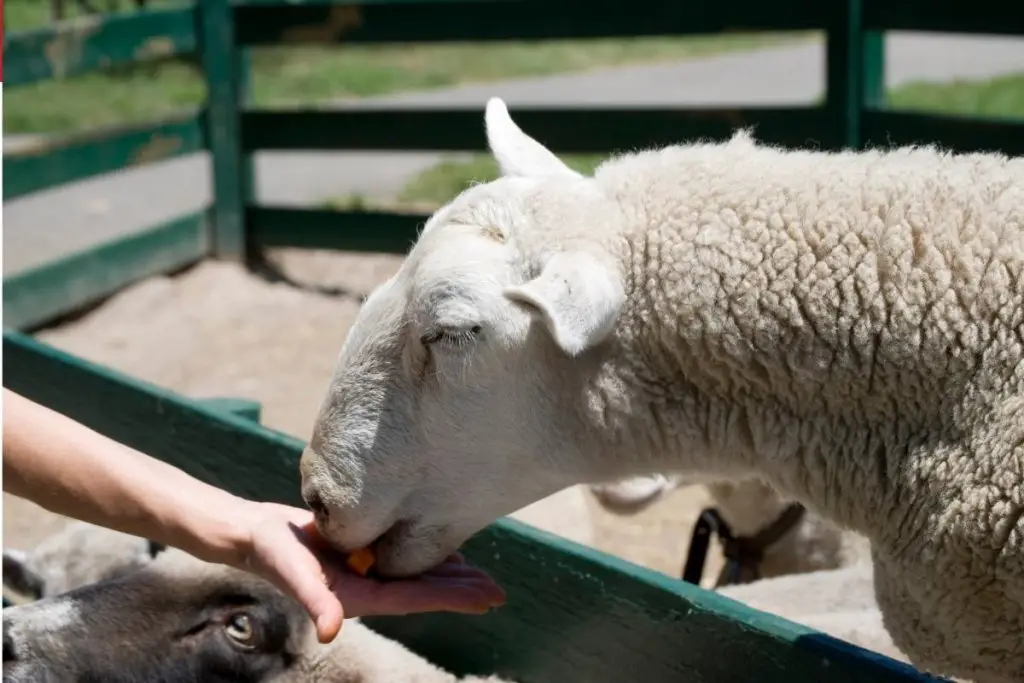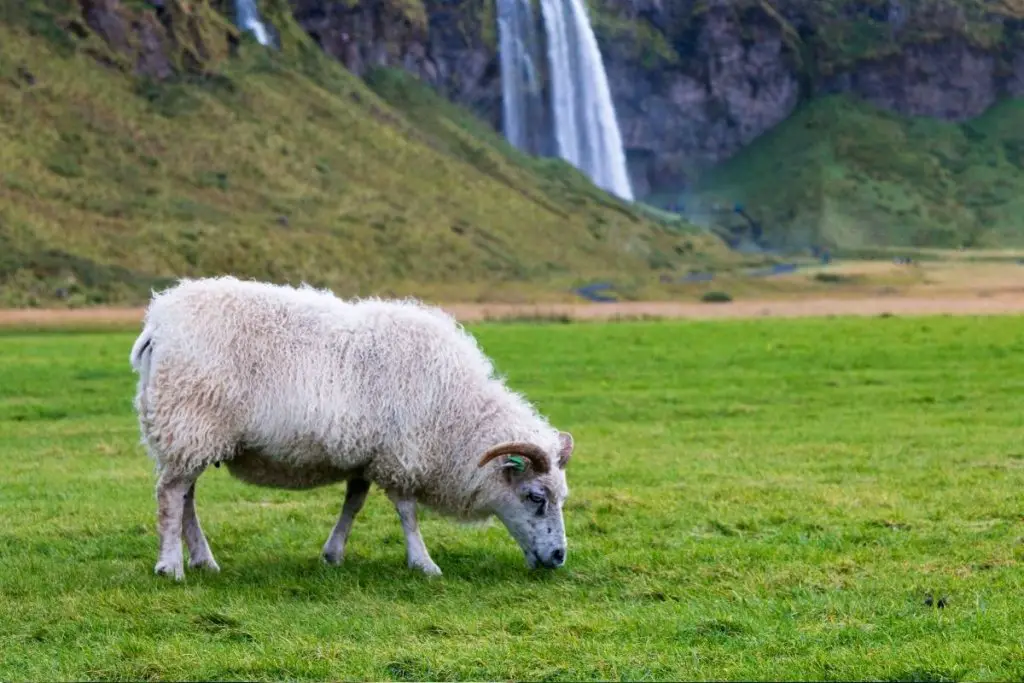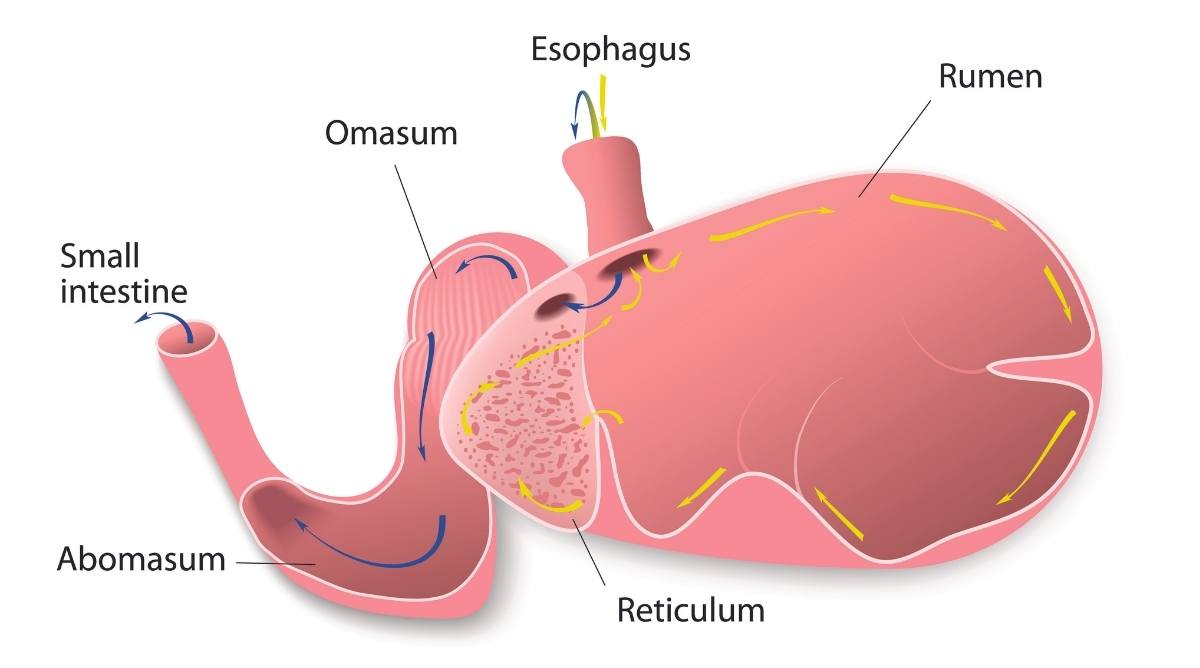Sheep are ruminants, meaning they have four-chambered stomachs. Their unique digestive system consists of the rumen, reticulum, omasum, and abomasum. The main function of a sheep's ruminant digestive system is to allow better absorption of energy from food.
Table of Contents
Understanding a sheep’s ruminant digestive system
Like cows, sheep are ruminant animals. They chew, regurgitate, and rechew food.
The main function of the ruminant digestive system is to allow better absorption of energy from food.
Since ruminants often swallow food without chewing, the rumen is essential for nutrient absorption in sheep. It’s responsible for 60-70% of digestion. It contains numerous microbes that ferment the food and help digest soluble sugar, complex starches, and cellulose from plants. Moreover, they synthesize vitamins K and B and protein from nonprotein sources.
A sheep’s small intestine is tube-shaped and about 150 feet long. It includes the duodenum, jejunum, and ileum. The large intestine is made up of the cecum, colon, and rectum. The intestines help with active nutrient absorption.
Anatomy of a sheep stomach

A sheep’s stomach consists of four compartments:
- Rumen
- Reticulum
- Omasum
- Abomasum
The rumen handles the initial processing of food, sending cud to the mouth where it is rechewed. Some of the cud is returned to the rumen, where it feeds microorganisms in the sheep’s gut. The environment of the rumen is anaerobic (has no oxygen). It produces gasses, including carbon dioxide, methane, and hydrogen sulfide. It has a stable pH environment ranging from 6-7.
The reticulum is located in front of the rumen and has a honeycomb appearance. Its main purpose is to protect the sheep’s digestive system from foreign objects that may be heavy or sharp.
The omasum absorbs food nutrients and water.
The abomasum, or the “true stomach,” is similar to nonruminants’ stomachs. Its functions are producing hydrochloric acid and certain digestive enzymes (pepsin, for instance) and receiving other types of digestive enzymes from the pancreas (pancreatic lipase).
How the sheep digestive process works (step-by-step)

- Food lands in the rumen: When a sheep first swallows food, it lands in the rumen.
- The rumen sends cud for rechewing: Once the food is processed in the rumen, cud returns to the mouth, where it is rechewed.
- Liquid cud goes to the reticulum for processing: When that is done, the liquid portion of the cud ends up in the reticulum. From there, it travels to the omasum and abomasum to be digested further.
- Solid cud goes back to the rumen to feed microorganisms: A solid chunk of cud returns to the rumen, forming a dense mat. It stays there for up to 48 hours and feeds the microorganisms in the sheep’s gut.
Other elements of the sheep digestive tract
The sheep digestive system also includes:
- Tongue
- Mouth
- Esophagus
- Salivary glands
- Gallbladder
- Pancreas
Microbes and fermentation in sheep stomachs
There are three types of microbes in sheep stomachs:
- Fungi (break down plant fiber and starches)
- Bacteria (digest plant material)
- Protozoa (live off starches and sugar and prey on bacteria)
Microorganisms break down the plant cell walls and produce volatile fatty acids, which serve as a key energy source for sheep.
Plant matter consists of about 75% carbohydrates, so fermentation degrades them to simple sugars.
Chewing cud isn’t just for cows
Like cows, sheep chew their cud (partially digested, regurgitated food bolus). Rechewing cud is typical for ruminant animals. This process is called rumination.
It has two main purposes in sheep, cows, goats, and other ruminants:
- Breaking down plant matter
- Stimulating the digestive system
What sheep eat and how it affects digestion

Sheep are grazers, meaning they feed on ground-based plants. In the wild, sheep normally eat grasses and foliage. Farm sheep may also graze on available pasture plants. In winter, they often eat silage (preserved fodder).
Since sheep often eat this food without chewing it, their ruminant digestion system is critical to allowing them to absorb as many nutrients as possible.
Common sheep feed additives to boost their digestion and overall health include:
- Probiotics (improve digestion and immunity)
- Ionophores (improve feed utilization)
- Antibiotics (oxytetracycline can be beneficial to pregnant ewes)

